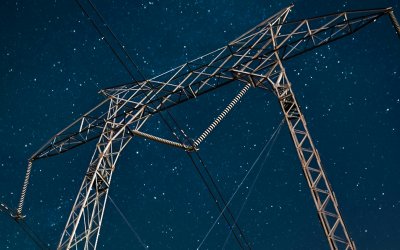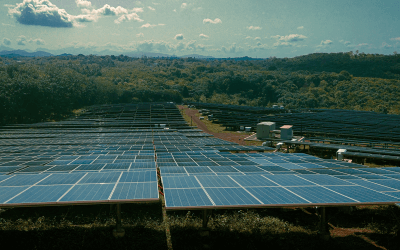Love Canal residents discuss revitalizing their contaminated neighborhood with EPA Administrator Lee M. Thomas in 1985.
The Poison Beneath Our Feet
New York’s Battle Against Toxic Waste
It’s a quiet summer evening in Niagara Falls, but the ground tells a different story—a silent history of devastation. Beneath what now seems like an ordinary neighborhood lies the infamous Love Canal, a name that once struck fear and sparked outrage across the nation. Buried here are tons of chemical waste, a toxic legacy that destroyed lives and reshaped the way America viewed environmental safety. Yet, despite the progress since those harrowing days, New York remains a battleground for toxic waste and illegal dumping. This is not just a story of the past but an ongoing crisis that demands action.
The Haunting Legacy of Love Canal
In the 1970s, the Love Canal disaster shocked the nation. Families fell ill, birth defects skyrocketed, and an entire community was forced to abandon their homes when toxic chemicals began seeping into basements and playgrounds. Hooker Chemical Company had buried thousands of tons of hazardous waste here in the 1940s and 50s, only for it to be capped, sold to the city, and developed into a residential area. The horror that followed led to evacuations, lawsuits, and heartbreak—but it also served as a catalyst for national reforms like the Superfund Program.
Yet even after decades of remediation efforts, the shadow of Love Canal lingers. Portions of the area have been redeveloped, but questions remain about the long-term safety of living on or near such sites. Families affected by the disaster still battle health problems and grief, serving as a grim reminder of the consequences of negligence.
The Hudson River: An Ongoing Fight Against PCBs
Further east, the Hudson River flows as a lifeline through the state, but its waters carry a toxic burden. For decades, General Electric discharged polychlorinated biphenyls (PCBs) into the river, contaminating a 200-mile stretch. Classified as probable human carcinogens, PCBs have left fish unsafe to eat, polluted sediment, and raised health risks for communities along the river.
Though the EPA has undertaken extensive dredging projects to remove PCBs, the cleanup has been fraught with challenges. Environmentalists argue that toxins remain buried in the riverbed, continuing to poison aquatic ecosystems and people who rely on the waterway. “We’ve made progress,” says one environmental advocate, “but the Hudson is far from clean. This fight is far from over.”
Invisible Threats in Rural New York
While urban centers like Niagara Falls and Syracuse grab headlines, rural areas often bear the brunt of illegal dumping. Sites like the Tannersville Landfill in the Catskill Mountains leak heavy metals and industrial chemicals into pristine watersheds, endangering local communities and wildlife. These sites often evade national attention, left to state programs with limited resources.
The Gowanda Landfill sits precariously close to Cattaraugus Creek, a vital water source. Despite clear evidence of contamination with lead, arsenic, and mercury, the site remains unfenced, exposing unwitting visitors to harm. A lack of federal support means cleanup falls solely on the state’s shoulders—a burden that delays progress and perpetuates environmental injustices.
The Cost of Cancer and Contamination
The cost of toxic dumping isn’t measured only in dollars but in lives. Communities near hazardous waste sites frequently report elevated cancer rates, respiratory illnesses, and birth defects. Research has linked prolonged exposure to chemicals like PCBs and dioxins to severe health conditions, including non-Hodgkin lymphoma and leukemia.
At Onondaga Lake in Syracuse, once one of the most polluted lakes in the nation, local residents still grapple with long-term health impacts. Remediation has been slow and expensive, with visible progress overshadowed by lingering fears of toxicity. For those living near these sites, every glass of water, every breath of air carries a question: Is it safe?
Why Are Some Sites Forgotten?
New York boasts over 2,000 contaminated sites, yet only 51 are on the EPA’s National Priorities List. Many hazardous locations, such as the Rensselaer Landfill, fail to qualify due to bureaucratic loopholes or insufficient data. Without federal oversight, these sites languish in limbo, relying on piecemeal state funding.
A striking example is the Saratoga Springs’ Ballston Spa Landfill. Contaminated with PCBs and heavy metals, the site is not fenced off, leaving it accessible to the public. In one tragic incident, a teenager who unknowingly entered the area later developed severe health issues linked to chemical exposure.
The failure to secure and remediate these sites speaks to a larger issue: the prioritization of corporate interests over public health. By allowing toxic waste to remain untreated, the state risks repeating the mistakes of the past.
Building on Tainted Ground
The redevelopment of former toxic sites adds another layer of complexity. In some cases, contaminated land has been repurposed for housing or commercial projects. Red Hook, Brooklyn, built atop a former landfill, now features thriving residential areas. Yet, concerns about buried toxins persist, raising fears about future exposure.
Love Canal itself has seen redevelopment. Despite extensive soil remediation, reports of lingering health problems among new residents fuel skepticism about whether these sites can ever truly be safe.
A Call to Action
The fight against toxic dumping in New York is far from over. While programs like the State Superfund have achieved significant milestones, the sheer scale of contamination demands more aggressive action.
Faster Cleanup: Delays in remediation leave communities exposed for years, if not decades. Increased funding and streamlined processes are critical to accelerate these efforts.
Stronger Enforcement: Illegal dumping persists due to weak enforcement in rural and economically disadvantaged areas. Harsher penalties and proactive monitoring are essential to deter future violations.
Public Awareness: Many residents remain unaware of the risks posed by nearby toxic sites. Education campaigns can empower communities to demand accountability and push for cleanup.
A Shared Responsibility
As New York confronts its toxic legacy, the responsibility to act lies with all of us. From policymakers to corporations to citizens, every stakeholder has a role to play in ensuring a safer, cleaner future.
The people of Love Canal fought for change, and their courage ignited a movement. It’s up to us to continue that fight, so that future generations inherit a land free from the poison beneath their feet.
Read This Next
New York’s All-Electric Buildings Act — goes into effect December 31.
Photo by: Casey Horner New York’s All-Electric Buildings Act —it goes into effect December 31.Reprinted from a Facebook post by Mark Walczyk.This state law was snuck into the State budget revenue bill (S4009-C/A3009-C) in 2023 and mandates most new construction...
Pseudo-Science is killing our enviroment
Photo by: Harisankar Those Who Claim to Care About the Environment Are Killing It With Their Pseudo-ScienceIsn’t the purpose of preserving our environment to sustain life, all life at its highest potential? Simple enough. “Follow the science,” we’re told. But...
NY’s “brownfields”toxic chemicals still poison soil and groundwater decades after closure
Photo credit Amir Arefi NY’s “brownfields” toxic chemicals still poison soil and groundwater decades after closureNew York’s “brownfields” are the scars of its industrial past. Abandoned factories, gas stations, tanneries, and mills where toxic chemicals still...



